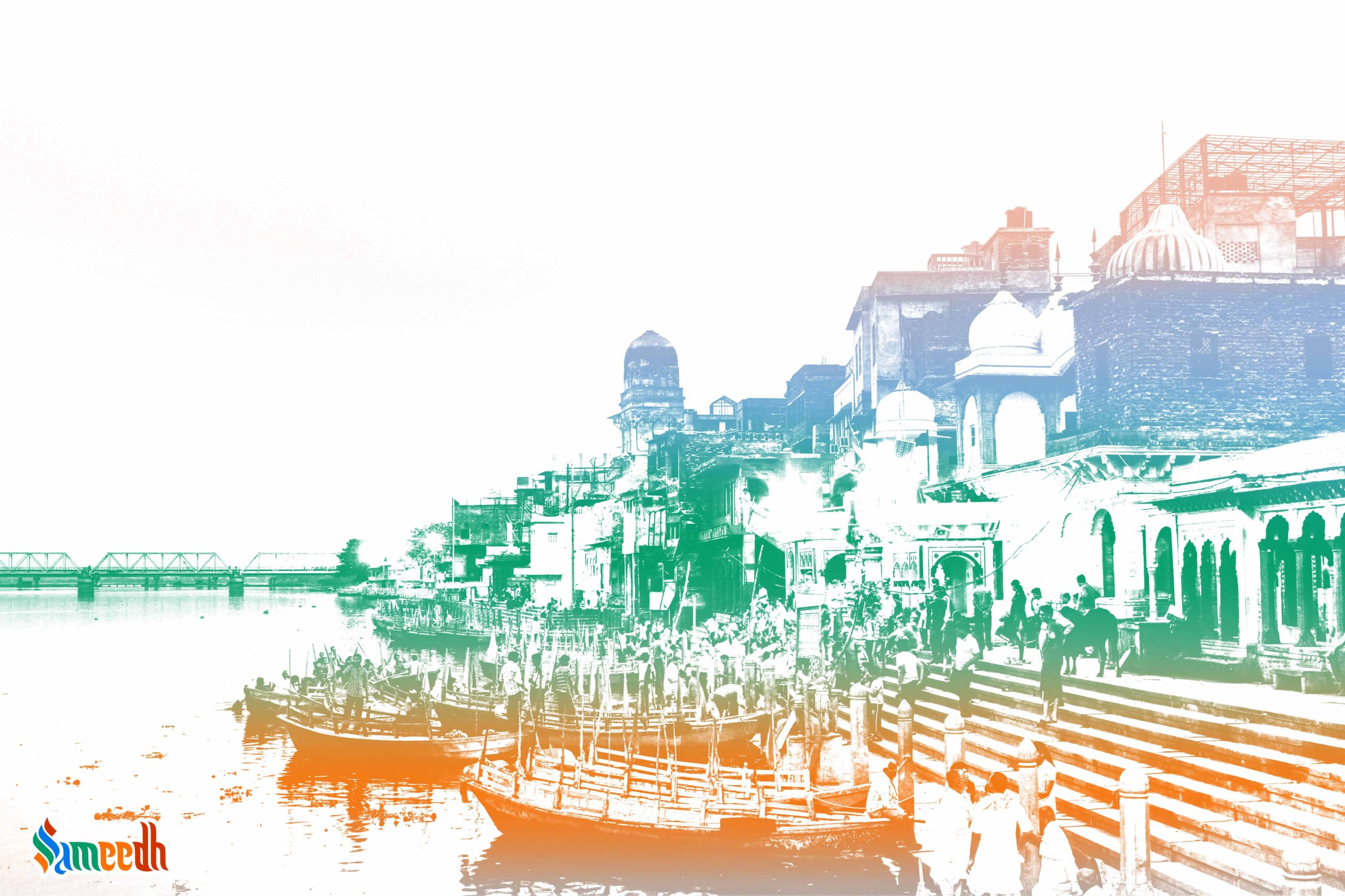The Yamuna River originates from Yamunotri in the Himalayas. After passing through Agra and Delhi the river merges into the river Ganga alongwith the legendary River Saraswati, at Prayagraj. The place of their Holy confluence is known as the ‘Triveni Sangam’.

Vishram ghat of Mathura in the evening just before Evening Yamuna aarti; Image Source: Umang
The Yamuna River is India’s fifth-largest river. This river has been a significant part of Indian culture for many centuries. The place from where the Yamuna River emerges is known as ‘Yamunotri’, which is located in the Himalayas. Yamuna River flows from Yamunotri and merges into the river Ganga at the ‘Triveni Sangam’ in Prayagraj, Uttar Pradesh, along with the legendary river Saraswati.
History and significance of Yamuna
Yamuna is referred as in ancient Indian history as the daughter of Surya (Sun) and his cloud goddess wife Saranyu or Sanjana. She is also a twin sister of Yamraj, the God of death. Her other brothers include Shani Dev (Saturn), the celestial physicians and twin Ashwini Kumars, and Vaivasvata Manu, the very first man on earth.
The name Yamuna is explained by a narrative that claims Sanjana shut her eyes in the presence of her husband Surya because she couldn’t endure the heat and light that emerged from him. This angered Surya and he declared that their son shall be called Yam, for the restraint she displayed. However, despite Sanjana’s valiant efforts, her eyes continued to flicker, which infuriated Surya once more and caused him to declare that their daughter would be named Yamuna. Sanjana had made an effort to keep her eyes open, thus Yamuna was fortunate that she was blessed by Surya that she would be revered as a deity and worshipped till eternity. It is believed that if a pair of brother and sister takes bath in the Yamuna on ‘Bhai dooj’ festival, they would be absolved of all their sins and granted a long life.
Present day Geographical significance
The Yamuna River originates in the western part of the Himalayas. The Yamuna River runs alongside the west of the river Ganga while it first flows south, and then turns southeast. After passing through Agra and Delhi the river merges into the river Ganga at Prayagraj. The confluence of the rivers is regarded as a holy place by Hindus. Barges and small boats can traverse the Yamuna River easily, as the river shrinks its riverbed throughout the summer, because of the evaporation and also because the water is drawn out for irrigation in the larger part of the land from where the river Yamuna passes through.
Story of Yamuna as per the religious texts and poems
The Sanskrit hymn Yamunashtakam, written in the 16th century and composed by the philosopher Vallabhacharya, offers additional information about the story. This poem tells the tale of Yamuna’s ascent to meet her beloved Shree Krushna and purify the world. The hymn also honours Yamuna as the origin of all spiritual gifts. Yamuna possesses eternal love and compassion, is capable of bestowing Moksh or salvation from even death, the domain of her elder brother, Yam. As the Krushna Leela’s background music plays, she races down the mountain Kalinda, presenting herself as the daughter of Kalinda, named Kalindi.
Yamuna’s association with Shree Krushna
When Vasudev was carrying the newborn Bhagwan Shree Krushna from the jail to Gokul, he had to pass the surging Yamuna River. Vasudev stepped into the roaring river in the midst of heavy rainfall during the night. As soon as Vasudev went deeper into the waters and Bhagwan Shree Krushna’s little feet touched the water of Yamuna, the river suddenly turned calm and made a pathway for Vasudev to safely cross to the other shore of the river. Bhagwan Shree Krushna also spent the majority of his childhood in Vrindavan, playing flute and doing ‘Raas’ alongwith His beloved Radha and the Gopis, on the banks of the river Yamuna.
According to the Bhagavat Puran, Bhagwan Shree Krushna once paid a visit to his cousins, the Pandav brothers in Indraprasth, which is situated on the shores of the river Yamuna. One day, Bhagwan Shree Krushna went to the forest with Arjun. Since Arjun was tired from their trip, he walked to the Yamuna with Bhagwan Shree Krushna and bathed there and sipped the fresh water. There was a pretty girl walking along the riverbank. The girl introduced herself as Surya’s daughter Kalindi and informed Arjun that she had been performing penance for a long time, with the intention of marrying the avatar Bhagwan Vishnu. Upon learning this, Bhagwan Shree Krushna marries Kalindi or Yamuna and brings her to Dwarka along with Him.
